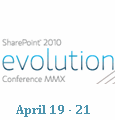Manage SharePoint Libraries from Desktop Folders
For someone who is frequently adding documents to a specific library, it’s nice to have a folder on the desktop for dragging, dropping and managing files. It’s a very simple process that can yield great benefits for those who want to participate in your site, but don’t have time to constantly login to do updates.
Follow these steps to create a folder on your desktop:
- Open your SharePoint site and navigate to the library you have chosen
- Copy the URL of the library
- Right mouse click Start button in lower left corner of Windows to open Windows Explorer -> Choose Open
- Menu at top of Explorer: Tools -> Map Network Drive
- Click “Sign Up for Online Storage or Connect to a Network Server” -> Choose Next
- Click “Choose another Network Location…” link -> Choose Next
- Insert copied URL into Browse field
- Delete any part of the URL address that is after the folder name (this usually means delete ‘Forms/AllItems.asp’ or something similiar) -> Choose Next
- If requested, login with username and password
- Insert a name that will appear as the shortcut on your desktop -> Choose Next
- Leave the default to Open this Network Place -> Choose Finish
- Drag the selected library icon to your desktop
That’s very useful when you want to get a quick view into a SharePoint library on a regular basis. Because it shows up now in a Windows Explorer view, you can sort, add, delete and manage the library right from your desktop.





You may want to add step 7 1/2 to sanitize the URL. Spaces in an URL are represented by “%20″ (and other punctuation by similar “percent” codes). In my experience, the Network Place wizard does not like such URLs. I must manually convert these percent codes to their equivalent punctuation. My users hate this, especially because our URLs tend to include spaces followed by the year (e.g. “Year 2008″, which appears as “Year%202008″). Figuring out which “20″s need replacing and which do not is an ongoing sore point with them.
Chris,
That is an excellent point! It can be rather frustrating to attempt to sanitize the link. In an initial search, I found the following website to be helpful in decoding the URL %xx codes.
http://www.hashemian.com/tools/html-url-encode-decode.php
I’m not sure how much I would trust my secure URL’s with this tool, but you could place the portion of your url you want to translate into the tool and then click on URL decode at the bottom.
I might also point out that if your SharePoint site is available on your local network, you can make use of the Windows Explorer view to create your shortcut. This will provide a UNC path (\\server\site\docs) that will automatically be scrubbed of those pesky %xx codes.
On Vista there is a wizard interface that allows you to use a Web page as a server and set it up as a mapped drive.
but what is i am having version control or check in check out enabled on that document library